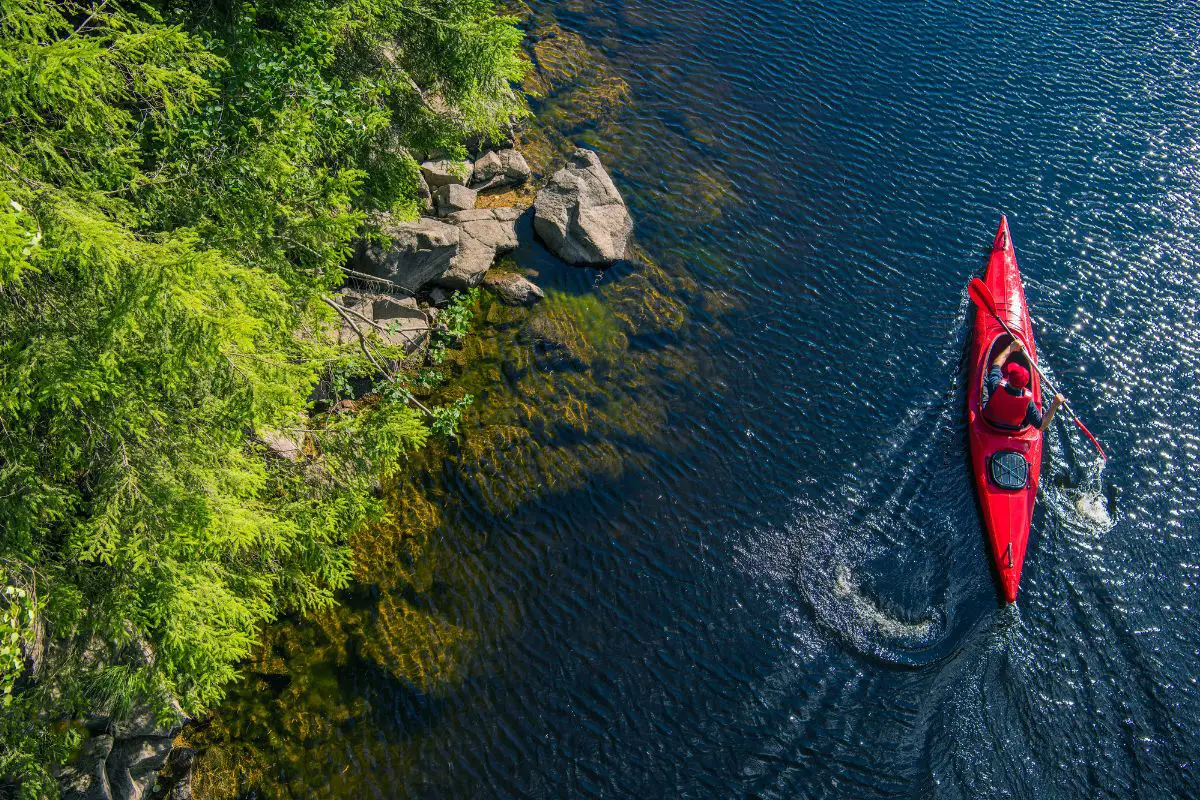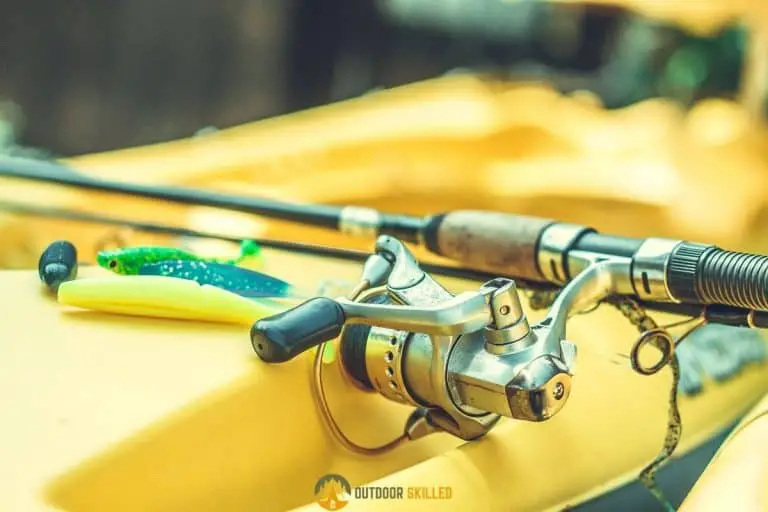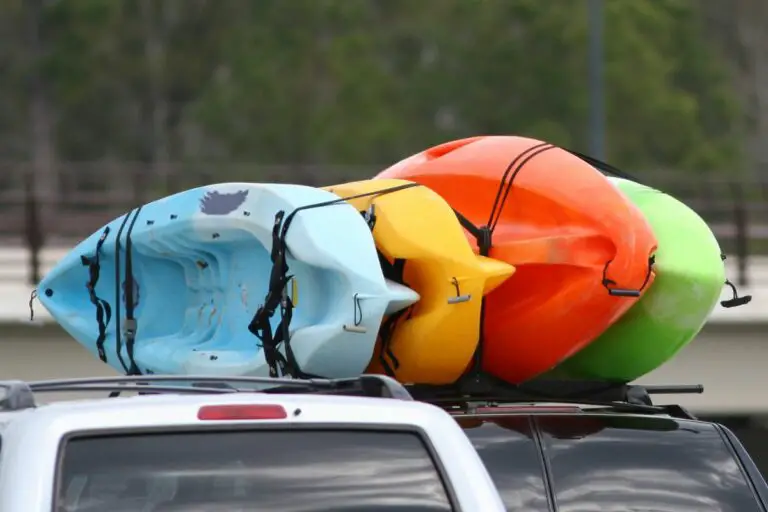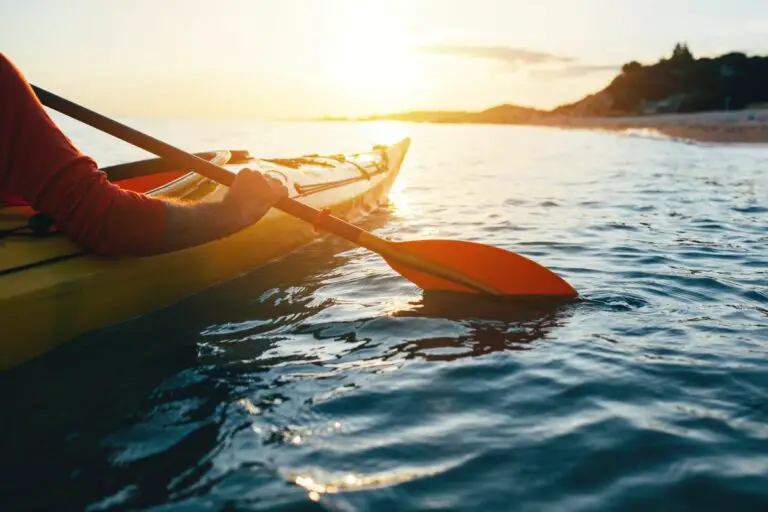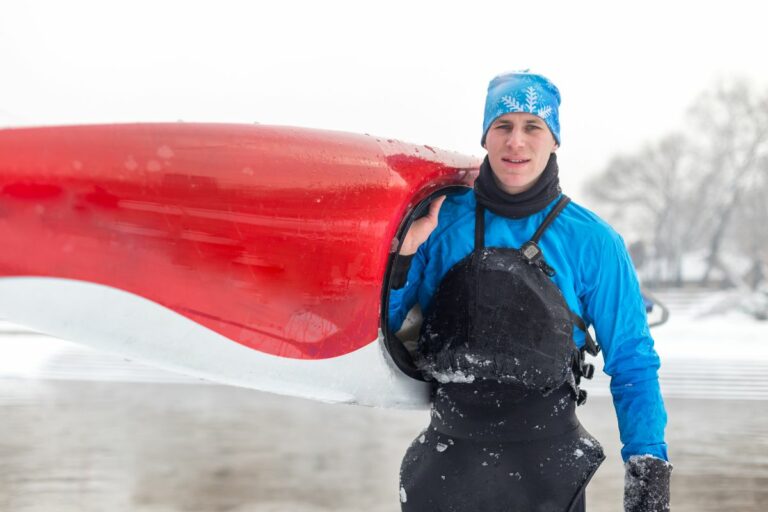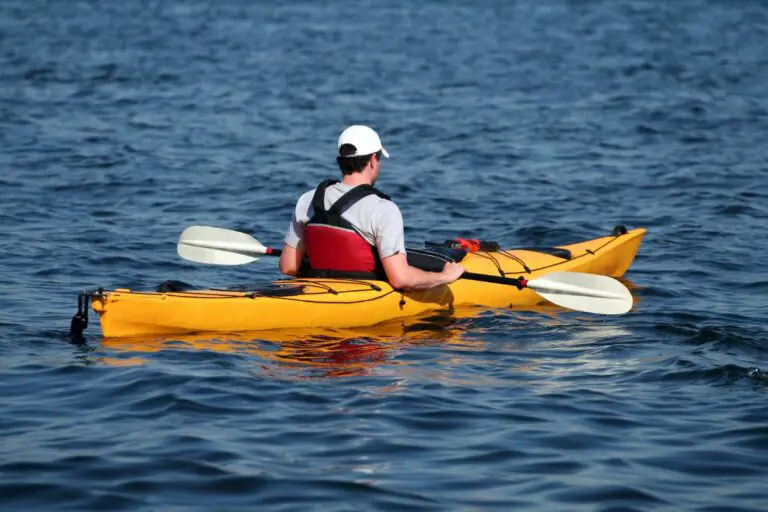How Fast Can You Kayak on A River? 10 River Kayaking Tips
Kayaking on a river can be an exhilarating experience, whether you’re a seasoned pro or a beginner. The thrill of the rushing water, combined with the challenge of navigating your kayak through the twists and turns of the river, can be both exciting and rewarding.
But just how fast can you kayak on a river? Whether you’re a seasoned kayaker or a beginner, understanding the dynamics of kayak speed can help you enhance your paddling experience and take your skills to the next level.
You can kayak at a speed of 2-3 mph on a river if you’re a beginner or if the water is calm. However, experienced kayakers can typically reach speeds of 4-8 mph or higher on rapids. The kayak’s speed on a river depends on factors like water conditions, kayak design, and paddling technique.
Keep reading to learn more about the factors that affect kayak speed and how to safely kayak on fast rivers.
Table of Contents
How Fast Can You Kayak on A River?

The speed at which you can kayak on a river varies greatly depending on your experience, among other factors.
Beginners tend to have a slower pace due to a lack of experience and technique. Their average speed can range from 2-4 mph, depending on the river conditions and kayak type.
On the other hand, experienced kayakers can paddle at much faster speeds, averaging 4-8 mph, as their skill and technique allow them to navigate the river with greater efficiency and control.
However, some exceptional kayakers can achieve record speeds that exceed 30 mph. These individuals are often professional kayakers who have spent years perfecting their technique and training their bodies for high-performance kayaking.
They might also use specialized kayaks that are designed to maximize speed.
Can You Kayak Faster on Rivers than In the Sea?
River conditions can sometimes allow you to kayak faster than in the sea.
That is because rivers tend to have calmer waters with less wind, waves, and currents compared to the sea, which can make it easier to paddle and maintain a consistent speed. The current might also be strong enough to assist the kayaker’s momentum.
However, river conditions can also present challenges that may slow down kayak speed, such as obstacles like rocks, rapids, or shallow areas that require more maneuvering.
It’s also worth noting that, in some cases, sea kayaking can be faster than river kayaking due to favorable sea conditions. Additionally, sea kayaks are often designed for speed, with long, narrow shapes that can cut through the water more efficiently.
It should be your goal as a kayaker to learn how to adapt to any conditions, whether you’re river kayaking or sea kayaking, and use them to your advantage to achieve the fastest possible speed.
Factors That Affect Kayaking Speed
Kayaking speed on a river can be affected by several factors, including:
- Water flow: The speed and direction of the river current can significantly affect how fast you can kayak. Paddling upstream will be slower than paddling downstream, and faster water flow will increase your speed.
- Wind speed and direction: Strong headwinds can slow you down, while tailwinds can help you move faster. Crosswinds can also affect your stability and steering, which can impact your speed.
- Kayak design: The shape and size of your kayak can affect your speed. Longer, narrower kayaks are typically faster than shorter, wider kayaks. Additionally, the materials used to make your kayak can affect its weight and buoyancy, which can also impact your speed.
- Weight on board: The weight of the kayak, equipment, and paddler can all impact speed. A heavier kayak or heavier load can require more effort from the paddler to maintain speed. Additionally, the weight distribution on board can affect the kayak’s stability and maneuverability, which can also impact speed.
- Paddling technique: Proper paddling technique is essential to kayaking speed. Efficient strokes with good body positioning can increase your speed and help you maintain a steady pace.
By understanding these factors, you can adjust their paddling technique and equipment to optimize your speed when kayaking on a river.
How to Kayak Faster on A River?

Now that you know the factors that affect kayaking speed, here are some tips to help you kayak faster on a river:
- Improve your paddling technique by using a high-angle paddle stroke, engaging your core muscles, and focusing on timing and rhythm to propel the kayak forward more quickly.
- Choose a kayak that is appropriate for the speed and flow of the river and that is designed for stability and maneuverability in fast water. You can check out my recommendations for the best river kayaks here.
- Optimize your weight distribution by keeping your weight centered and balanced, and avoid overloading the kayak with unnecessary gear or equipment.
- Use the current to your advantage and kayak in areas of the river with favorable currents, such as eddies, waves, or downstream flows. This will help you conserve energy and speed up your progress.
- Position your body and paddle to minimize wind resistance, and consider wearing form-fitting clothing that won’t flap in the wind.
Like any skill, kayaking faster on a river takes practice and training. So, make sure to set realistic goals, track your progress, and remain consistent to gradually improve your technique and endurance over time.
General Safety Tips for Kayaking on A River
kayaking on a river can be a thrilling and rewarding experience, but it also involves some risks. Here are some general safety tips for kayaking on a river:
- Always wear protective gear, including a personal flotation device (PFD) and a helmet.
- Wear weather-appropriate clothing, such as a wetsuit or a drysuit, gloves, and waterproof footwear to stay dry and reduce the risk of hypothermia.
- Check the weather and river conditions before setting out, and avoid kayaking in high water, heavy rain, or thunderstorms.
- Tell someone your planned route and the estimated time of return.
- Scout the river ahead of time to identify any hazards, such as rocks, rapids, or obstacles.
- Avoid kayaking alone if possible, and always paddle with a group if you are a beginner.
- Carry appropriate safety gear, such as a whistle, first aid kit, and rescue throw rope.
- Stay alert and pay attention to your surroundings, including the current, obstacles, and other kayakers or boaters on the water.
- If you capsize, stay with your kayak and use your paddle as a flotation device.
- Practice safety drills, such as rolling and wet exits, before kayaking on a river. These skills can help you recover from a capsize or other emergency situation quickly.
Regardless of your skill level, it’s important that you don’t sacrifice your safety for speed. By following these tips and taking the necessary precautions, you can enjoy the adventure while staying safe and in control.
Kayak your way to Freedom
- On a budget? Check out the best fishing kayaks under $500 here and the best Fishing Kayaks under $1,000 here. Or Check the best Cheap Kayaks here.
- Going fishing? Here are the best Ocean fishing kayaks, and here are the best River Fishing Kayaks.
- You can also find the best Fly Fishing Kayaks here and the best Bass Fishing Boats here.
- A bit experienced? Check out the best modular kayaks here and the best tandem fishing kayaks here.
- Looking for something special? Check out my favorite Ducky kayaks here.
- Navigate your way with these awesome and beginner-friendly Kayak compasses.
- Going Hunting? These Duck hunting kayaks will give you an unfair advantage!
- Have a need for speed? These motorized kayaks will get you moving.
- Protect yourself from the sun with these Kayak shades, and make your kayak more comfortable with these Kayak seats.
- Keep your feet dry and warm with these superb Kayaking shoes.
- Going Kayaking in cold water? Stay warm with these Kayaking gloves.
- Paddle Less, Fish More with the Best Kayak Motors
- Looking to get a trolling motor on your kayak? Check out the best kayak trolling motor mounts here.
If you like this article, please share it or pin it, you can find the share buttons below. We will really appreciate it ❤️

